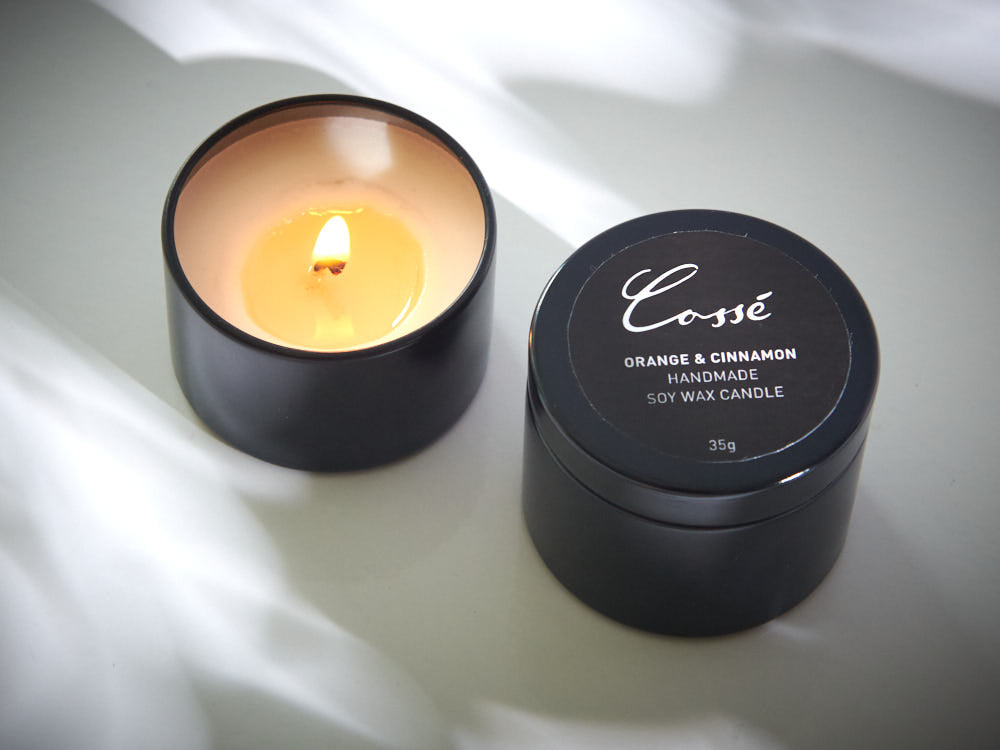Infuse Your Home with the Scent of Crystal Soy Candles and Home Fragrance
Infuse Your Home with the Scent of Crystal Soy Candles and Home Fragrance
Blog Article
From Wick to Wax: Comprehending the Chemistry Behind Soy Wax Candles and Their Ecological Impact
As we illuminate our rooms with the warm radiance of candle lights, there lies a world of intricate chemistry behind the relatively basic act of lighting a soy wax candle light. The choice between soy and paraffin wax expands past mere aesthetics, diving right into the realm of environmental effect and the really make-up of the products. Understanding the molecular framework of soy wax and its combustion procedure clarifies the discharges released right into our environments. Join us as we decipher the clinical ins and outs behind soy wax candle lights and explore their implications on our setting.
Soy Wax Vs. Paraffin Wax
When contrasting soy wax and paraffin wax for candle light production, it is vital to comprehend the distinct characteristics and benefits of each material. Soy wax is a natural, renewable energy derived from soybean oil, making it environmentally friendly and eco-friendly - soy wax candles. On the other hand, paraffin wax is a by-product of oil refining, which raises problems about its environmental effect and sustainability
Soy wax candles shed cleaner and emit less residue contrasted to paraffin wax candles, making them a much healthier choice for indoor air quality. Additionally, soy wax has a lower melting point, permitting a longer-lasting candle light that disperses fragrance better. Paraffin wax, on the other hand, often tends to burn faster and much less easily, potentially releasing damaging chemicals into the air.
From a sustainability perspective, soy wax is favored for its biodegradability and sustainable sourcing, lining up with the expanding customer preference for eco mindful items. While paraffin wax has been a traditional selection in candle making because of its price and convenience of usage, the change in the direction of eco-friendly options like soy wax is getting momentum in the market.
Chemical Make-up of Soy Wax

Combustion Refine in Soy Candles
The chemical composition of soy wax straight influences the burning procedure in soy candle lights, influencing variables such as burn time, aroma release, and environmental influence. When a soy candle is lit, the warmth from the flame melts the wax near the wick. This fluid wax is after that drawn up the wick as a result of capillary activity. As the liquid wax reaches the fire, it evaporates and goes through combustion. The burning process entails the vaporized hydrocarbons in the wax reacting with oxygen airborne to create warmth, light, water vapor, and carbon dioxide.
The burning effectiveness of soy candle lights is influenced by the purity of the soy wax and the quality of the wick. Furthermore, soy wax candles have a lower environmental effect compared to paraffin candles due to their sustainable and eco-friendly nature.

Environmental Benefits of Soy Wax

Considered a sustainable choice to standard paraffin wax, soy wax offers remarkable environmental advantages that make it a prominent option among eco-conscious consumers. One significant advantage of soy wax is its sustainable sourcing. Soy wax is stemmed from soybean oil, which is primarily grown in the United States. The farming of soybeans aids support regional farmers and decreases the dependence on non-renewable fossil fuels made use of in paraffin wax production. Additionally, soy wax is biodegradable, indicating it breaks down naturally without launching dangerous contaminants into the environment. This characteristic makes soy wax candle lights a much more ecologically pleasant option contrasted to paraffin wax candle lights, which are made from petroleum, a non-renewable source. Additionally, soy wax burns cleaner and produces much less residue than paraffin wax, contributing to much better interior air quality and decreasing the demand for cleaning and maintenance. In general, the ecological advantages of soy wax line up with article the expanding need for sustainable and eco-friendly items out there.
Recycling and Disposal Considerations
Recycling and proper disposal of soy wax candles play a vital role in preserving ecological sustainability and lowering waste in communities and households. When it pertains to reusing soy wax candles, the initial step is to guarantee that the candle light has actually burned totally. This can be attained by allowing the candle to shed till the wick is no much longer useful, and after that allowing the staying wax cool and strengthen. As soon as the wax has solidified, reference it can be thoroughly removed from the container.

In regards to disposal, if recycling is not an alternative, soy wax candles are biodegradable and can be safely taken care of in a lot of home waste systems. However, it is always suggested to consult local recycling facilities or waste management solutions for particular standards on candle light disposal to make sure correct handling and environmental management.
Verdict
In final thought, the chemistry behind soy wax candle lights discloses their ecological benefits over paraffin wax candles. Soy wax, obtained from soybean oil, burns cleaner and produces less soot when compared to paraffin wax.
When comparing soy wax and paraffin wax for candle making, it is crucial to recognize the distinct qualities and address benefits of each material (home fragrance).Soy wax candle lights melt cleaner and emit much less residue compared to paraffin wax candle lights, making them a much healthier choice for indoor air quality.Taken into consideration a lasting choice to conventional paraffin wax, soy wax supplies notable ecological benefits that make it a popular selection amongst eco-conscious customers. Soy wax burns cleaner and produces less residue than paraffin wax, contributing to far better interior air quality and minimizing the demand for cleaning and upkeep.In final thought, the chemistry behind soy wax candle lights exposes their environmental advantages over paraffin wax candles
Report this page